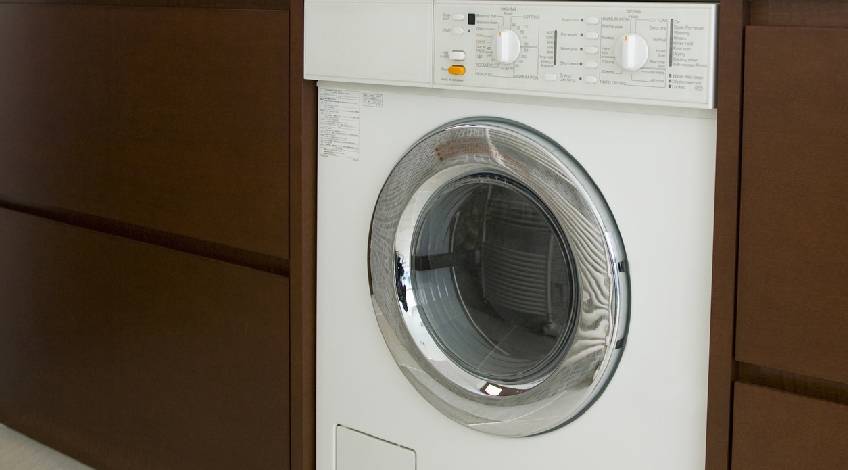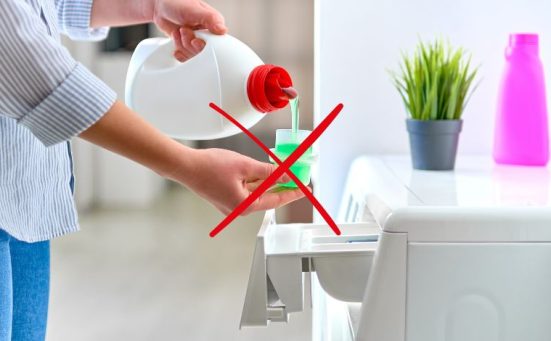
Do Washing Machines Need A Backflow Preventer?
To prevent the waste water from your washing machine going back into your home’s water supply, it needs to be fitted with a backflow preventer. In fact, under UK legislation all washing machines and dishwashers have to be fitted with a directional control valve (DCV) according to the water regulations advisory scheme (WRAS).
What does this mean to householders? What do you need to do? And how much is it going to cost? If you’re thinking along these lines, keep reading. In this article I will tell you all you need to know about backflow preventers and what you need to do to protect your home’s water supply.
Does Your Washing Machine Need A Backflow Preventer?
The good news is that as long as it’s for use in your own domestic home and not for commercial use, the check valve already installed in your washing machine (and dishwasher) is sufficient to cover you under the legislation.
This means that under normal circumstances, you do not need to install any other type of backflow preventer. However, you may still want to. This is because installing a backflow preventer is the only way of being certain that waste water from the appliance won’t contaminate your water supply.
What Is Backflow?
Backflow is a term used by plumbers to indicate the contamination of clean drinking water by wastewater that has flowed in the wrong direction. When applied to a washing machine,it’s caused by the wastewater from the machine flowing back into your home’s water supply causing contamination.
This means the water used for drinking, cooking and bathing will contain contaminants from the washing machine’s wastewater.
What Can Cause Backflow?
There are two main causes of backflow which are;
- Back Pressure
This occurs when the pressure of the wastewater is greater than the pressure of the incoming (fresh) water supply. This is likely to happen in a high pressurised system. Something like a boiler, pump or elevated tank. It is also more common in washing machines with power wash cycles. - Back Siphonage
Back siphonage is caused by a sudden drop in pressure that makes the wastewater move in the opposite direction. This usually occurs when breakage happens in the main water supply.
What Exactly Is A Backflow Preventer?

A backflow preventer is a device that is designed to allow water to flow in only one direction. It prevents the water from returning the way it has come or flowing backwards.
There are different types of backflow preventers available but the most common types are;
- Atmospheric Vacuum Breakers (AVB)
- Directional Check Valves (DCV)
- Air Gap Backflow Preventers
The role of each of these is to prevent the backflow of wastewater contaminating your home’s water supply. They do this in slightly different ways. Let’s look at each type in more detail.
Atmospheric Vacuum Breakers (AVB)
AVB backflow preventers are commonly used on taps and hoses and work by opening a valve when the pressure drops. As the valve’s air vent opens, it breaks the vacuum and seals the main water supply completely.
This ensures there is no back siphonage when the pressure drops in the supply line. The AVB needs to be fitted at least 6 inches (15 cm) above ground level to stop backflow and they’re not entirely effective against constant water pressure.
Directional Check Valves (DCV)
Directional check valves or non-return valves as they’re also known, are smaller than AVBs. They work by opening when the pressure of wastewater builds as it leaves the washing machine.
Then, once the wastewater pressure decreases as it stops flowing, the valve closes preventing backflow. DCVs are designed to be used under constant water pressure and they can be fitted on an individual outlet.
They can also be installed both vertically and horizontally.
Air Gap Backflow Preventers
Air gap backflow preventers are typically installed on dishwashers more than washing machines and work by creating an air gap to prevent backflow. They are relatively inexpensive and are effective in separating clean water from wastewater by separating the hoses of the two.
There are other types of backflow preventers that are commonly used in industrial and pharmaceutical industries which include;
- Reduced Pressure Zone (RPZ) Devices
- Hydrostatic Loops
- Flood Gate Valves
Do You Need To Install A Backflow Preventer On Your Washing Machine?

Now that you have a better understanding of what a backflow preventer is and how it works, You’re probably wondering whether you need to install one.
There are a couple of reasons why it might not be necessary to install a backflow preventer which are;
- Washing machines have anti-backflow devices built in to prevent backflow.
- Washing machines typically drain directly into the sewer line via a standpipe which, if fitted correctly, prevents water from flowing backwards.
However, the efficacy of these two can be questionable, for instance; the built-in anti backflow device installed in your washing machine is not guaranteed to be 100% effective. As we saw earlier, issues including back pressure and siphonage could, in some cases cause backflow.
Also if the standpipe is not of the correct height or is an incorrect diameter it could cause backflow.
Which means that to be 100% safe from the issue of backflow, you should install a backflow preventer.
What Are The Benefits Of Installing A Backflow Preventer?

The main benefits of installing a washing machine drain hose backflow preventer in your home include;
- Water Safety
Wastewater backflow is a hazard to health. If the wastewater from your washer finds its way into your water supply it could be full of harmful chemicals and pathogens. Installing a backflow preventer stops this from becoming a problem. - Water Purity
The water will not only be safe to drink, it will also be pure and clear. Not discoloured and definitely not smelly. Whether you’re washing in it or drinking it, you will be secure in the knowledge that the backflow preventer has kept the water pure. - Prevents Expensive Repair Bills
Wastewater backflow can cause damage to your washing machine and plumbing. This would entail costly repairs on a regular basis unless a backflow preventer was installed. - Inexpensive Parts
Backflow preventers for washing machines are relatively inexpensive to buy with many costing less than £20
What Are The Disadvantages Of Installing A Backflow Preventer?
The main disadvantages of installing a backflow preventer include;
- Installation Can Be Messy
Any type of plumbing work can involve some mess. Installing a backflow preventer can be a difficult and messy job and is not something to be undertaken unless you are confident in your abilities. - Professional Installation Costs Can Be Expensive
Hiring a plumber to install the backflow preventer will prevent confusion, exasperation and reduce mess. However, it will increase the cost. Any professional will not come cheap so be prepared for an expensive bill.
SEE ALSO: Do You Need To Elevate A Washing Machine Drain Hose?
Frequently Asked Questions
Washing machines sold in the UK have to have a backflow preventer built in. However, these built-in backflow preventers don’t offer 100% protection and you might need to fit a backflow preventer of your own into the pipework to prevent any backflow contamination.
Domestic washing machines sold in the UK have built-in backflow preventers so no, you do not need to install a backflow preventer device. However, the device built-in to your washing machine will not be 100% effective and it is advisable to install an independent backflow device of your own.
Backflow on a washing machine refers to wastewater flowing back into the appliance or into your home’s water supply making it unsafe to use as well as often making it smell bad, taste bad and look discoloured.
Also, follow us on Pinterest ...



